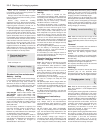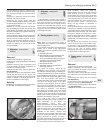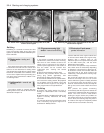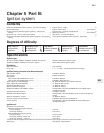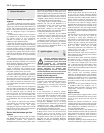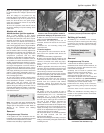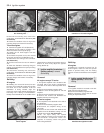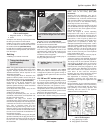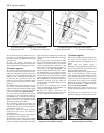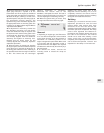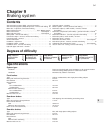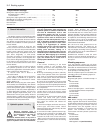
10 To check the vacuum advance unit, run
the engine at a fast idle speed and reconnect
the vacuum pipe. The flywheel mark should
again advance.
11 Stop the engine, disconnect the
tachometer and timing light and reconnect the
vacuum pipe. Refit the timing aperture cover.
XU series engines
12 To set the ignition timing statically so that
the engine can be started, first remove No 1
spark plug (nearest the flywheel) and turn the
engine in the normal rotational direction until
pressure is felt - indicating that the piston is
commencing the compression stroke. The
pressure can be felt using a suitable wooden
rod or piece of cork placed over the spark
plug hole.
13 While looking into the timing aperture in
the clutch housing/transmission casing,
continue turning the crankshaft until the single
mark on the flywheel is opposite the BTDC
mark on the timing plate (see illustration).
14 Check that the distributor rotor arm is
facing the No 1 HT lead segment position in
the distributor cap. To do this, remove the cap
and mark the outside in line with the segment,
then put it back on the distributor noting
which way the rotor arm is facing.
15 If necessary, loosen the mounting nuts
and turn the distributor body to bring the
segment and rotor arm in line, then tighten the
nuts. Refit No 1 spark plug.
16 Run the engine to normal operating
temperature then stop it and connect a
tachometer to it.
17 Disconnect and plug the vacuum pipe at
the distributor vacuum advance unit.
18 Disconnect and remove the air cleaner
inlet duct then connect a stroboscopic timing
light to the engine as described in the timing
light manufacturer’s instructions, and with the
HT pick-up lead connected to No 1 spark plug
HT lead.
19 On early models, run the engine at 3500
rpm and point the timing light into the timing
aperture. The double mark on the flywheel
should be aligned with the TDC mark on the
timing plate; indicating that the ignition is
advanced by 30° (see illustration). On
engines without double timing marks, refer to
the Specifications for the relevant ignition
timing setting and engine speed, then check
that the single mark on the flywheel is aligned
with the appropriate mark on the timing plate.
20 If adjustment is necessary, loosen the
distributor mounting nuts and rotate the
distributor body as required. Tighten the nuts
on completion.
21 Check the centrifugal and vacuum
advance characteristics of the distributor, as
described in paragraphs 9 and 10.
22 Stop the engine, disconnect the
tachometer and timing light then reconnect
the vacuum pipe and air cleaner inlet duct.
TU series engines
23 To set the ignition timing statically so that
the engine can be started, refer to the
procedures contained in paragraphs 12 to 15
above.
24 To check the ignition timing, a
stroboscopic timing light will be required. It is
also recommended that the flywheel timing
mark is highlighted as follows.
25 Remove the plug from the aperture on the
front of the transmission clutch housing.
Using a socket and suitable extension bar on
the crankshaft pulley bolt, slowly turn the
engine over until the timing mark (a straight
line) scribed on the edge of the flywheel
appears in the aperture. Highlight the line with
quick-drying white paint - typist’s correction
fluid is ideal (see illustrations).
26 Start the engine, allow it to warm up to
normal operating temperature, and then stop
it.
27 Disconnect the vacuum hose from the
distributor diaphragm, and plug the hose end.
5B•6 Ignition system
8.25a On TU series engines, remove the
plug from the transmission housing . . .
8.25b . . . to reveal the timing plate and
flywheel timing mark (arrowed)
8.13 Initial static ignition timing on XU series engines
a Single flywheel mark b BTDC mark on timing plate
8.19 Dynamic ignition timing on XU series engines
a Double flywheel mark b TDC mark on timing plate



